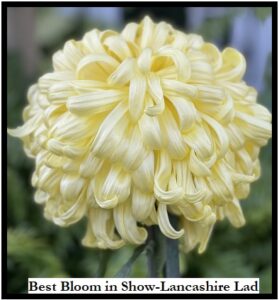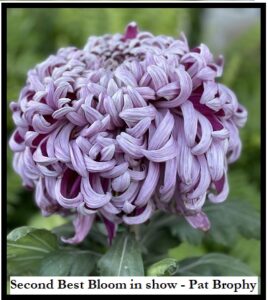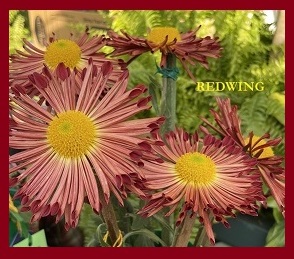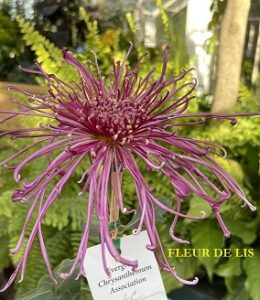HAPPY VALENTINE’S DAY
MEETING OF THE ECA – is scheduled for THURSDAY FEBRUARY 12, 2009 at
7:00 PM at the Seattle Police Athletic Association Office (SPAA) site at 11030 East Marginal Way South, Tukwila.
TELEPHONE COMMITTEE MEMBERS call your lists early in the week of February 2nd as your calls do help to increase attendance.
ECA MEMBERSHIP
Dues have not yet been received from 53 members (60% of the membership). The cost is $15 per member or $20 per couple. Only paid up members names can be included in the 2009 year book. Checks payable to ECA should be either mailed to Christopher Brookes or paid in at the February meeting. If a member has any doubt whether they have paid or not please check with me by phone or e-mail Thank you
MEMBER PLANT SALE – The first member plant sale of the year occurs at the February meeting. ECA growers bring plants to the meeting for sale to help other members who do not start plants from cuttings, secure plants for the coming growing season. Plants available for the first sale are generally the late blooming varieties that are in classifications 1 through 5. The cost of each plant will be $1.00 for members.
New members receive ten free plants for the first growing season. No more than five free plants should be selected at the February sale. This helps assure the new grower success managing the early season growing challenges and also greater access to a wider selection of plants such as the early blooming varieties which are easier to grow and are more available at the March member sale (March 12th Meeting) and March 28h (at Furney’s Nursery) Public Plant Sale.
New Members are encouraged to contact Bob Ewing 206-243-2907 to be assigned a coach who will provide personalized growing instruction and advice. It is highly recommended that new members take advantage of this membership service. Don’t be shy give Bob a call!!!
MUMS REQUESTED BY PATRONS FOR 2008, this should also apply for 2009
Golden Rain, Connie Mayhew, First Light, Woolmans Century, Ice Box, Alabama, Lundy, Mt Rainier, Morning Star, Honey, Powder Puff, Elsie Prosser, Revert Equinox, Chase Wakes, Elizabeth Shoesmith, Red Woolmans Glory –red & yellow, Anzac , Mary Jane, Atomic, Cossack, Tennis, Pumpkin, Primrose Tennis, White Billy Bell, Bullfinch, Port Stanley, Purple light, Seatons Ruby, Vienna Waltz, Kermit, Gillette, Ogmore Vale, Seigi, Cherry Venice, Fairweather, Koshi no Yuki,
Talbot Parade, Lilli Gallon, Lava, Vicky
PLANT CULTURE – Continue to start plants for our public sale in March. Plants must be given protection for the first few months and carefully nurtured to establish strong root systems before potting or repotting. In February, take starts for the early blooming varieties. At this month’s meeting, the focus is growing plants, cultivar selection, materials and your reference books. Cultural recommendations are attached.
SUPPLIES – Supplies to be available at the February meeting.
• Plant Labels, White and Yellow 100 per pack.
• 2½” Plastic planting/starting cubes
• M&R Soilless Growing Media (Need enough orders to buy a pallet for a lower price). The cultural committee has decided to provide only M&R mix. It is a better product for mums than the mix used previously. This mix can be used for all pottings from the first 2 ½” pot to the 9 or 10” final pot.
Contact: Don Stark with Soilless orders.
Messenger will also be available for purchase if you have any questions, Contact: Bob Ewing
Novice Handbooks will be available at the next meetings and the Public Plant Sale at a cost of $2.00 (payable to the Treasurer)
To receive monthly Newsletters by email only rather than U.S.mail, send an email to Jill Aldrich.
February to-do List (New: 1-28-06 DRS)
Continue with cuttings:
Continue taking cuttings throughout Feb. and into March for some. A few early Feb. cuttings can be available for the March Plant sales (March Members sale at the March meeting and the public plant sale on Sat. March 29th). Most Feb. and March cuttings should be of the early English and American varieties. Late Decoratives) Classes 4, 5, 14 and 15) should be started primarily in Feb. Take cuttings for yourself and for the plant sale.
Most varieties in classes 1,2 and 3 should have been started by the end of January: however here are some varieties that can be successfully grown from Feb. cuttings. #1 & #2’s Lundy, Yellow Lundy, David Dando, Ralph Lambert, Yellow Ralph Lambert, Athabaska, Harry Gee, Jane Sharpe and Seychelle. #3’s Len Hall, Salmon, Primrose and yellow Fairweathers, Stockton and Heather James.
Cuttings started directly in the cutting bed media should not require fertilization before potting on. If you are starting in the cross bottom bands or 2” clay pots, fertilizer should be added after 3 to 4 weeks as these cutting generally require 5-6 weeks before potting on. Start fertilizing once a week beginning with the 4th week. Use an early Mum fertilizer, Peters 9-45-15 or Plant Marvel 12-45-10 (One Tsp/Gal once a week)
Potting on:
Most growers are using the soilless M&R potting mix sold by the club. In general no additives are required for the early pottings (2” and 4” pots); however some growers like to add some special ingredients. For instance Alfalfa meal or pellets is a good stimulant that can be added. Avoid adding Bone meal, as you will probably find fungi growing on the top of your pots due to too much potassium.
– Pot the mums directly from the cutting beds into 2” pots, or from the starter bands or pots into 3” or 4” pots.
– Use new pots, or wash previously used pots with a mild bleach solution (Clorox) to kill moss and eliminate the viruses. When bleach is used thoroughly rinse pots in fresh water to get the bleach out of the pot.
– Clay pots are recommended for the 2”, 3”, 4” and 6” potttings as the clay pots will dry out better than plastic after watering. This is especially important during the cool March and April days.
– Pot on from cutting beds when the roots are ½ to ¾ in. long (Typically 4 weeks) into 2 ½” or 3” pots.
– Pot on from cross bottom bands, or pots when roots are growing thickly out of the pots or bands (Typically 6 weeks). Do not compact the mix!
– Place the newly potted mums out of the light or under the bench for 2-3 days to stimulate root growth.
Care:
– Shelter mums in the greenhouse, cold frame, or other shelter (Kitchen table or south facing window)
– Temperature should be between 50 and 60 degrees.
– Glass overhead will help keep mums from getting leggy.
Care Continued:
– B-9 is a good growth retardant that tends to help plants from getting too leggy. It is available through the club. If you choose to use B-9 it should be applied at the time of potting on and again at or near pinch time. Caution: Do not use B-9 on plants that tend to naturally grow short: i.e. all the Fairweathers, all the Alexis, Port Stanley and others.
– Plants will remain in this first potting for 4-6 weeks until they have produced a noticeable root ring around the bottom of the pot. Don’t be afraid to knock the root ball out of the pot after several weeks and examine the roots.
– Fertilize with 9-45-15, or 12-45-10 beginning the 4th week
(1 Tsp/Gal once a week) These fertilizers are available through the
Club at the monthly meetings.
ARCHIVES
Best Bloom in Show – Lancashire Lad

Second Best Bloom in Show – Pat Brophy

Peoples Choice – Redwing

Peoples Choice – Fleur De Lis

WHAT WE GROW AND HOW WE GROW THEM
Pages
- ECA Anemone Varietals
- ECA Cushion Varietals
- ECA Incurve Varietals
- ECA Intermediate Incurve Varietals
- ECA Large Exhibition (Irregular Incurve) Varietals
- ECA Medium Exhibition Varietals
- ECA Quill and Spoon Varietals
- ECA Reflex Varieties
- ECA Single Varieties
- ECA Spider Varietals
- Evergreen Chrysanthemum Association
Meta
Archives
